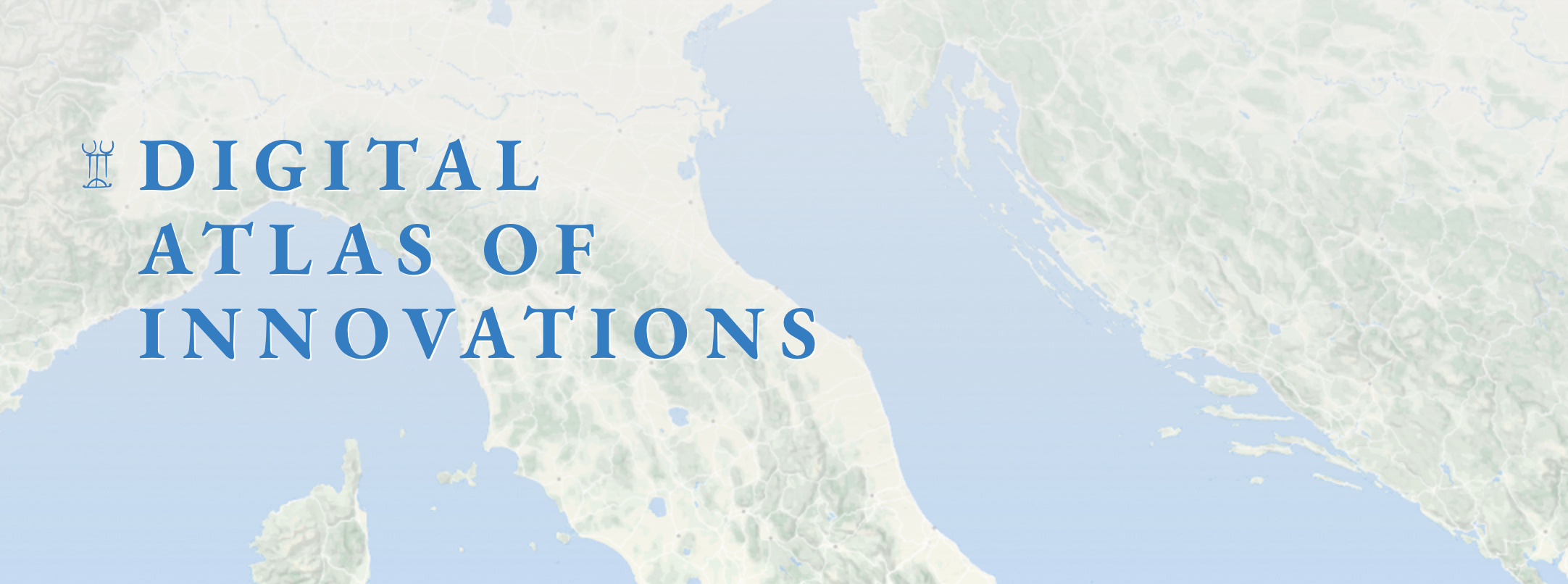The research group analyzed various groups of innovations such as the wheel and wagon, the plow, lead and silver, dagger-axes, large-scale sculpture, copper alloys, scales, lead ingots and glass. This research led to the development of a comprehensive cartographic representation: the Digital Atlas of Innovations, which is both a research tool and a way of visualizing research results
| 18 | Researchers |
| 32 | Publications |
| 38 | Events |
| 9 | Cooperating partners |
The Atlas presents dynamic maps of technical and social innovations – great and small – in the early history of humankind. Where is the oldest evidence for the wheel and the wagon? How did these and other major technologies occur and become widespread throughout Europe and Asia? The Atlas provides quick and reliable information and records the first appearances of important innovations over a broad geographical area. The current state of research on this subject is extremely heterogeneous. While there are rich collections of data for some innovations – such as the use of copper and gold, or pottery techniques like the wheel and furnace – for other innovations – e.g. balances and weights or the use of silver – the research group had to scrutinize various sources to obtain sufficient data. At the same time, members of the group used the Atlas to analyze comprehensively the spread of innovations and to reconstruct the relationships among them. Where, when, and why do some innovations prevail? Which regions do not adopt a development at all, or only belatedly? Where do innovations, after an initial phase, disappear again? The longterm development of the wagon, for instance, shows remarkable continuity. Evidence for wheeled vehicles remains constant from the beginning until the invention of the spoked wheel and the development of the chariot. The research group mapped the available evidence and examined the underlying sociotechnical criteria, which hindered the diffusion of wheeled vehicles into large parts of the ancient world.
The Digital Atlas of Innovations is a heuristic instrument that, besides gathering information, aids in establishing new associations. For the first time, the Digital Atlas of Innovations allows for a comprehensive view of the development of technology in the ancient world – an instrument for research but also a tool for anybody interested in the early history of humankind, in the development of techniques and in their social consequences.
It is intended to expand the Atlas with further groups of innovations. User participation and the addition of new data are crucial for its development. Even if the Atlas is presently limited to more ancient periods in Eurasia and Africa, it envisions a global history of knowledge extending into modern times. In the future, the Atlas might thus trace not only the dissemination of technical innovations, but also religious manifestations, e.g. burial customs.
Work of the group was supported by the MPIWG and the DAI and involved several international colleagues for the study of the relevant types of objects. Apart from a significant number of articles on specific innovations and on aspects of innovation in early history, the group published a comprehensive book on innovations in antiquity for the general public: Innovationen der Antike, Mainz: Philipp von Zabern, 2018.
Related Links


